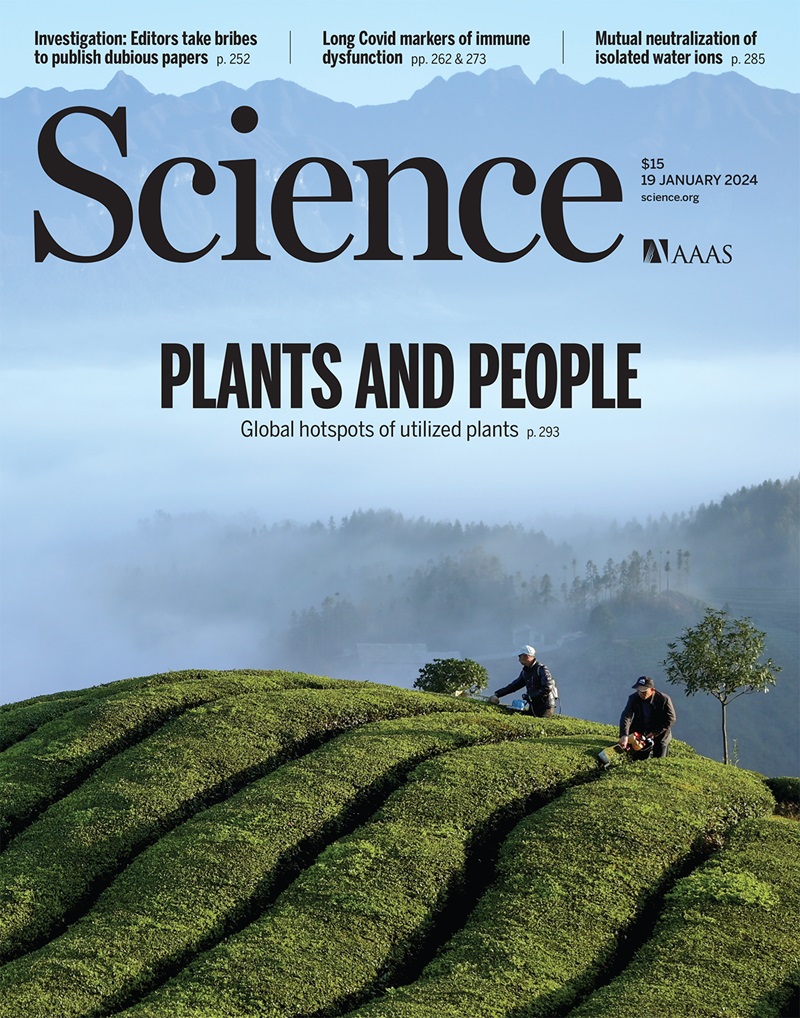De novo design and structure of a peptide–centric TCR mimic binding module
IF 45.8
1区 综合性期刊
Q1 MULTIDISCIPLINARY SCIENCES
引用次数: 0
Abstract
T cell receptor (TCR) mimics offer a promising platform for tumor-specific targeting of peptide–major histocompatibility complex (pMHC) in cancer immunotherapy. In this study, we designed a de novo α-helical TCR mimic (TCRm) specific for the NY-ESO-1 peptide presented by human leukocyte antigen (HLA)–A*02, achieving high on-target specificity with nanomolar affinity (dissociation constant Kd = 9.5 nM). The structure of the TCRm-pMHC complex at 2.05-Å resolution revealed a rigid TCR-like docking mode with an unusual degree of focus on the up-facing NY-ESO-1 side chains, suggesting the potential for reduced off-target reactivity. Indeed, a structure-informed in silico screen of 14,363 HLA-A*02 peptides correctly predicted two off-target peptides, yet our TCRm maintained peptide selectivity and cytotoxicity as a T cell engager. These results represent a path for precision targeting of tumor antigens with peptide-focused α-helical TCR mimics.
以肽为中心的TCR模拟结合模块的从头设计和结构
T细胞受体(TCR)模拟物为肿瘤特异性靶向多肽-主要组织相容性复合体(pMHC)在癌症免疫治疗中提供了一个有前景的平台。在这项研究中,我们设计了一个全新的α-螺旋TCR模拟物(TCRm),特异性针对人白细胞抗原(HLA) -A *02呈递的NY-ESO-1肽,具有高的靶向特异性和纳米摩尔亲和力(解离常数Kd = 9.5 nM)。在2.05-Å分辨率下,tcr - pmhc配合物的结构显示出一种刚性的tcr样对接模式,其不同寻常的程度集中在正面的NY-ESO-1侧链上,表明可能降低脱靶反应性。事实上,14363个HLA-A*02肽的结构信息硅屏正确预测了两个脱靶肽,但我们的TCRm保持了肽的选择性和细胞毒性作为T细胞参与器。这些结果为用肽聚焦的α-螺旋TCR模拟物精确靶向肿瘤抗原提供了一条途径。
本文章由计算机程序翻译,如有差异,请以英文原文为准。
求助全文
约1分钟内获得全文
求助全文
来源期刊

Science
综合性期刊-综合性期刊
CiteScore
61.10
自引率
0.90%
发文量
0
审稿时长
2.1 months
期刊介绍:
Science is a leading outlet for scientific news, commentary, and cutting-edge research. Through its print and online incarnations, Science reaches an estimated worldwide readership of more than one million. Science’s authorship is global too, and its articles consistently rank among the world's most cited research.
Science serves as a forum for discussion of important issues related to the advancement of science by publishing material on which a consensus has been reached as well as including the presentation of minority or conflicting points of view. Accordingly, all articles published in Science—including editorials, news and comment, and book reviews—are signed and reflect the individual views of the authors and not official points of view adopted by AAAS or the institutions with which the authors are affiliated.
Science seeks to publish those papers that are most influential in their fields or across fields and that will significantly advance scientific understanding. Selected papers should present novel and broadly important data, syntheses, or concepts. They should merit recognition by the wider scientific community and general public provided by publication in Science, beyond that provided by specialty journals. Science welcomes submissions from all fields of science and from any source. The editors are committed to the prompt evaluation and publication of submitted papers while upholding high standards that support reproducibility of published research. Science is published weekly; selected papers are published online ahead of print.
 求助内容:
求助内容: 应助结果提醒方式:
应助结果提醒方式:


